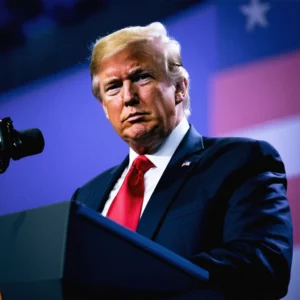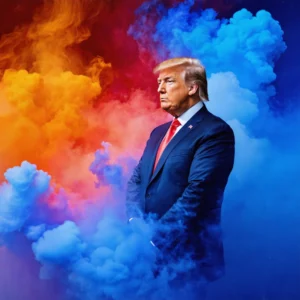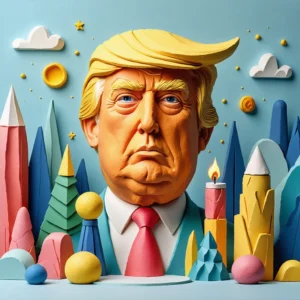
Opening the Curtain on a Turbulent Scene
In the dim hours of the early morning, I found myself wide awake, haunted by revelations emerging from transatlantic politics. US politics thrust itself into a narrative that entwines with the UK’s delicate cultural debates. Moreover, questions swirl around the impact of a controversial executive order and the ideological reshaping of cherished national spaces, such as the Smithsonian museums. Consequently, many observers experience a mixture of disbelief and concern as the fabric of free expression appears to unravel before our eyes.
The US Influence on a UK Controversy
Indeed, the US state department declared its intention to monitor a case coming from the UK, a move that raised urgent questions. A UK woman – Livia Tossici-Bolt – made headlines and stoked debates after she displayed a sign reading “Here to talk if you want” outside a Bournemouth abortion clinic. In response, authorities convicted her of breaching the clinic’s buffer zone, an act that ignited widespread outcry on both sides of the Atlantic. Moreover, the case intertwines with the activities of a prominent rightwing organization.
The Expanding Role of the Alliance Defending Freedom
Alliance Defending Freedom (ADF) now occupies a prominent position on this tumultuous stage. Undoubtedly, their role in funding contentious cases stokes further debate. Daily news outlets highlight an unusual escalation in their activities, which appear to push ideological boundaries beyond comfort zones. Additionally, the organization’s growing expenditure in the UK turns conventional political debates into cultural warfare narratives. As observers note, the ADF’s actions trigger both political anxiety and civic reflection.
Contextualizing the Ideological Shifts
Furthermore, the current unfolding drama demands a contextual review of events. Initially, political traditions on both sides of the Atlantic seldom intertwined as intimately as they do today. However, recent moves indicate a deliberate strategy that leverages judicial outcomes and cultural markers. For instance, alongside the Livia Tossici-Bolt case, editorial commentaries and activist outbursts converge in a landscape that appears both surreal and dangerously polarizing. Hence, many deduce that ideological filters now smudge previously clear distinctions.
Key Factors in the Transatlantic Debate
Transcending simplistic narratives, the debate reveals layers of influence and strategy. Notably, several factors emerge, including:
- Direct involvement by US governmental bodies with UK domestic policies;
- Enhanced funding and political backing for organizations like the ADF;
- A steady erosion of what constituted local ideological purity;
- Media-driven amplification of each sensational development.
Consequently, the flow of information produces a sense of urgency as political factions mobilize to dictate future policies.
Detailed Analysis of the Case
Subsequently, the narrative shifts to a detailed analysis of Livia Tossici-Bolt’s situation. In a dramatic sequence of events, she took a stand outside the abortion clinic, employing rhetoric that bridged protest and discussion. Simultaneously, critics condemned her actions while figures sympathetic to her cause argued that her simple gesture sparked necessary dialogue. Moreover, investigative journalism digs deeper into the ADF’s background and its connection to larger, ideologically driven battles. As a result, the narrative transforms into a broader inquiry into freedom of speech and normative cultural boundaries.
Mapping Out the Escalation
To fully appreciate the evolving context, one must consider a timeline of major events:
- Early signals from US executive policies setting the tone for ideological intervention;
- The rapid growth in ADF activities and its strategic investments;
- The live confrontation at the Bournemouth clinic that captured public imagination;
- An explosive reaction from political commentators on both sides of the Atlantic.
Thus, examining this timeline reveals a coherent pattern of escalating tensions bridging local and international fronts.
Visualizing the Data
The events create a data-rich narrative. Below is a table summarizing crucial details:
| Event | Description |
|---|---|
| US Executive Order | Mandated removal of divisive ideologies from national exhibitions. |
| Livia Tossici-Bolt Case | UK woman convicted for protesting outside an abortion clinic. |
| ADF Activities | Increased funding and political backing influencing legal battles. |
| International Reaction | Growing concern regarding free expression and ideological imposition. |
Undoubtedly, this visualization helps readers appreciate the complexity and interconnectedness of recent developments.
Examining Broader Implications
Furthermore, the narrative prompts questions regarding the influence of US policies on UK culture. The uneasy interplay between genuine democratic debate and externally enforced ideological narratives makes readers wonder about the future trajectory of such actions. Critically, each move signals a deeper struggle over who ultimately writes national histories. Additionally, these developments provoke significant scrutiny upon traditional institutions, as more people demand clear explanations and transparent motives behind policy decisions.
The Role of Free Expression in Political Dialogues
Subsequently, free expression subsumes an increasingly prominent role in current political dialogues. For instance, US authorities express concerns over free speech on UK soil, yet some activists view this as a patronizing interference in domestic discourse. Meanwhile, journalistic efforts continue to illustrate how such concerns modulate public opinion. Moreover, each statement and policy move appears carefully orchestrated to channel the debate toward a predetermined narrative. As a result, both critics and supporters rally around the idea that cultural identity must remain untouched by external agendas.
Recognizing the Current Crossroads
In summary, the unfolding events create a vivid illustration of competing ideologies, where external influences seem to imprint on national cultural debates. The narrative garners momentum as each stakeholder, from US bureaucrats to UK activists, takes measured actions. Additionally, discussions in vibrant public spheres lead to a reshaping of traditional policy debates into arenas of ideological warfare. Importantly, these shifts challenge longstanding assumptions about sovereignty, free expression, and cultural integrity in surprisingly intimate ways.
Looking Toward the Future
Looking toward the future, political strategists and cultural critics outline possible scenarios. They argue that journalists must continue to expose hidden agendas while citizens actively assess the consequences of these emerging trends. In turn, lawmakers might craft more nuanced policies that respect local autonomy, even while interacting with global political currents. Simultaneously, academic discussions and public forums provide nuanced interpretations of these shifts. Therefore, many feel that the current transatlantic debate marks only the beginning of a long, transformative period.
Personal Reflections and Interviews
During interviews, several voices emerged to share personal reflections on the drama. One interviewee recalled feeling both anger and hope at each progressive turn. Another noted that witnessing the real-time collision of US and UK political narratives felt like watching history rewrite itself at an alarming pace. In essence, these personal accounts add an intimate dimension to a debate too often clouded by abstraction and political jargon. Moreover, individuals across the spectrum search for meaning amidst the barrage of official statements and activist slogans.
Closing Remarks
In conclusion, the narrative weaves a complex tapestry of political maneuvers, ideological confrontations, and personal testimonies. Readers gain insights into a world where each time-stamped event carries weight far beyond its immediate implications. Clearly, the dialogue surrounding abortion rights and national identity occupies a unique position in contemporary discourse. As events continue to unfold, we must remain vigilant, question established narratives, and celebrate the spirit of free expression. Ultimately, these developments remind us that in the chaotic dance of politics, every act matters, setting the stage for future battles where public opinion and national values converge.




